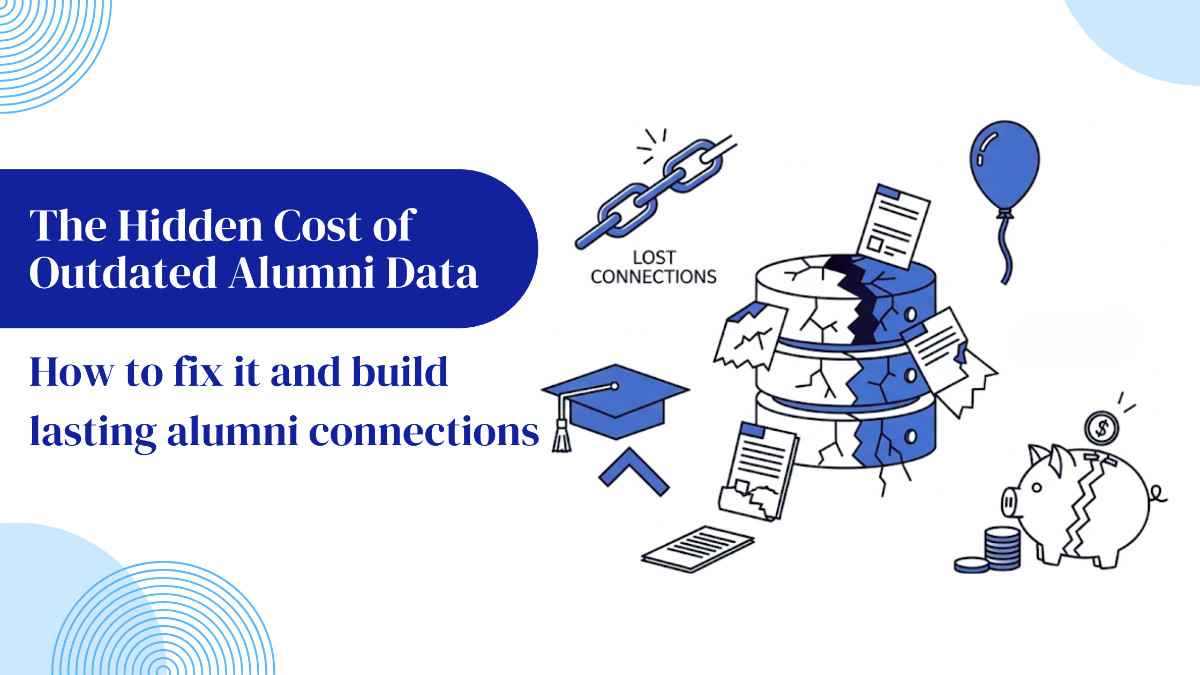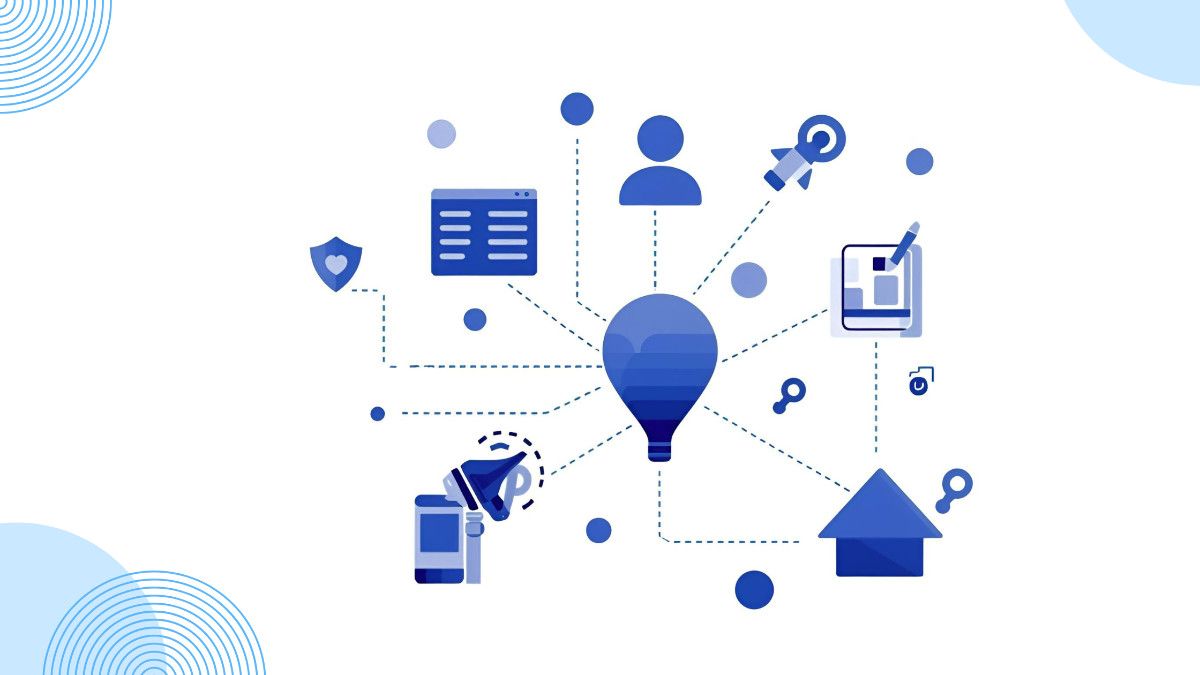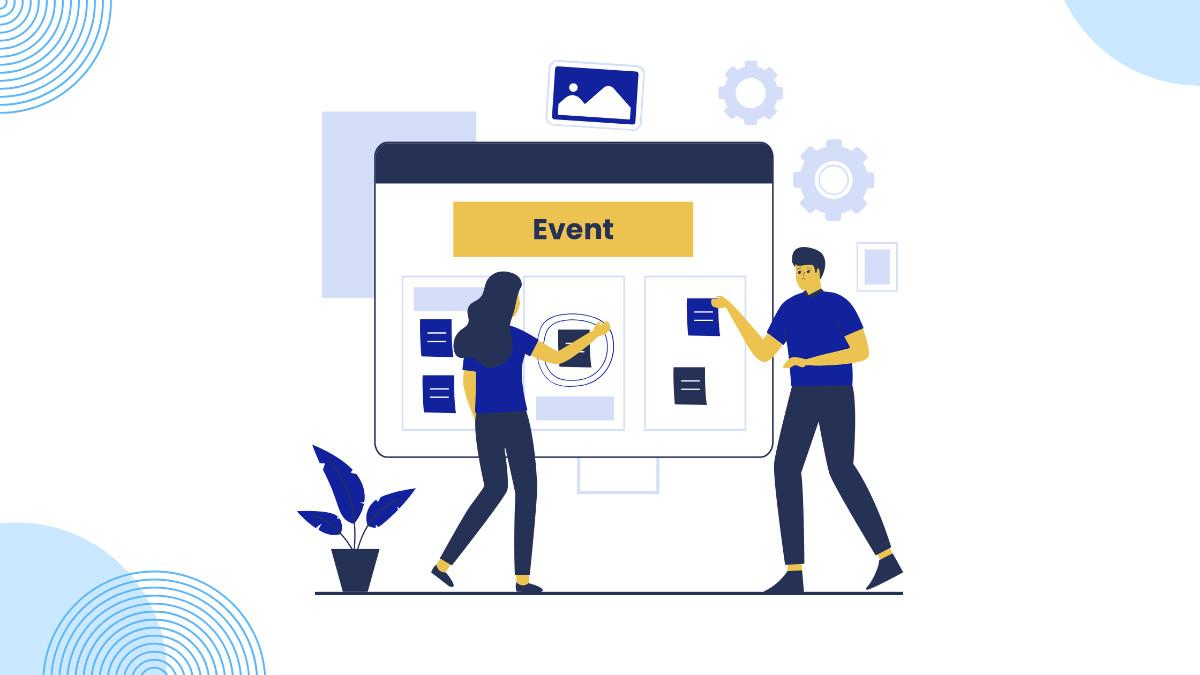The Hidden Cost of Outdated Alumni Data
Is outdated alumni data costing you engagement and funding? Discover how to fix it and build lasting alumni connections .

What is the impact of a bad alumni database on engagement, events, and fundraising?
Many institutions don’t realize the hidden costs of outdated alumni data—until it’s too late.
From bounced emails and unanswered calls to missed donation opportunities and low event turnout, poor data quality can quietly undermine even the best alumni engagement strategies. Whether you’re managing a school, college, or nonprofit alumni network, keeping your database updated is no longer optional—it’s essential.
In this article, we’ll break down:
- Why bad alumni data leads to poor communication and low engagement
- The biggest challenges institutions face with data maintenance
- How forward-thinking teams are using automation and real-time insights to stay connected
- What steps you can take today to fix and future-proof your alumni database
Let’s explore why your alumni engagement efforts might be falling short—and how accurate data can turn everything around.
The Real Reason Your Alumni Campaigns Fall Flat
Imagine this: your team is preparing for a landmark alumni fundraiser. You’ve secured the perfect venue, crafted a compelling message, and built a powerful theme.
But when it’s time to send out invitations to your alumni—your most valuable advocates—you hit a wall.
Half the emails bounce.
The rest remain unopened.
Phone numbers are outdated.
You have no idea where most of them live, what they do, or whether they’d even care to attend.
What should have been a celebration of connection becomes a scramble for relevance.
Sound familiar? You’re not alone.
Across educational institutions, nonprofits, and alumni associations, one issue repeatedly undermines engagement strategies: bad data
Why Inaccurate Alumni Data Is a Silent Threat
While teams invest heavily in content, campaigns, and event planning, they often overlook the foundation that drives it all—accurate, dynamic alumni data.
Here’s how bad data hurts your efforts:
1. Poor Communication and Personalization
Without verified contact details and updated profiles, even the most thoughtfully crafted campaigns fall flat. Emails land in spam, phone calls go unanswered, and generic messages fail to resonate.
Outcome: Lower open rates, disappointing event turnouts, and alumni who feel forgotten.
2. Missed Fundraising Opportunities
Fundraising success hinges on trust, timing, and targeting. But if key donor segments are missing, outdated, or miscategorized, you risk losing both support and momentum.
No clean data means no segmentation—and no results.
3. Weak Community Building
It’s impossible to launch successful mentorship programs, career support systems, or regional chapters when you lack insight into alumni interests, locations, or professional status.
When you don’t know your audience, engagement suffers.
Static Data vs. Dynamic Expectations
Here’s a truth most institutions don’t realize until it’s too late:
Alumni data degrades faster than you think.
People change jobs, move cities, update social profiles, or switch emails regularly. If your database doesn’t reflect these changes in real-time, your communication becomes increasingly irrelevant.
Worse, your alumni start tuning you out.
Falling Behind in a Digital-First World
Today’s alumni expect personalized, meaningful engagement—not generic newsletters or cold invites.
Institutions that rely on outdated spreadsheets or legacy CRMs are no longer just “behind the curve.” They’re invisible.
Meanwhile, leading institutions are embracing:
- AI-powered CRMs
- Interest-based community segmentation
- Smart analytics and engagement scoring
In this environment, bad data isn’t just a tech issue—it’s a brand issue.
Why Solving This Problem Feels So Hard
If this sounds like your organization, you’re not alone. Common challenges include:
- Alumni rarely update their info voluntarily
- Small teams lack the time for manual follow-ups
- Data is scattered across multiple platforms—Excel, ERPs, old CRMs, event logs, and offline forms
The result? Fragmentation, fatigue, and a lack of confidence in decision-making.
From Reactive Cleanup to Proactive Data Strategy
Leading institutions are shifting from passive data collection to active data enrichment. Here’s what that looks like in practice:
- Centralizing all alumni data into one secure platform
- Automating enrichment using verified LinkedIn, employment, and location data
- Using micro-surveys and digital interactions to capture interests and behavior
- Deploying tools like digital ID cards or event QR scans to track real-time engagement
And all of this can be done without hiring a massive data team.
Data Strategy Is Engagement Strategy
At AlmaShines, we’ve worked with 1800+ institutions and noticed one common factor in every successful engagement initiative:
“The success of your outreach isn’t determined by how often you communicate—but by how well you know who you’re communicating with.”
If your alumni database doesn’t reflect their current reality, you’re not engaging them—you’re ghosting them.
Rethink Your Alumni Data: A Living Ecosystem
Today, your alumni database shouldn’t just sit in a file.
It should:
- Show you which alumni have changed roles recently
- Help you create interest-based communities automatically
- Sync with web, social, and event data to adapt in real time
This isn’t a futuristic ideal. It’s the baseline expectation.
Ask Yourself These Questions
Before launching your next campaign or planning your next event, take a moment to reflect:
- When was your database last updated?
- Do you have a single source of truth—or multiple disconnected files?
- Are you making decisions based on assumptions—or actual alumni behavior?
If you’re unsure about any of these, it’s time to reevaluate your approach.
Final Thought:
Alumni engagement doesn’t begin with an email or an invite.
It begins with insight.
You don’t need to overhaul your systems overnight. But you do need to commit to a smarter, more dynamic strategy.
Because in today’s connected world, the institutions that win alumni trust are the ones that get personal—and stay relevant.
Want to explore how leading institutions are transforming their alumni data strategies?
Let’s start the conversation.
Suggested Blogs
Let’s discuss the idea
Join hundreds of companies transforming their corporate communities with Almashines






